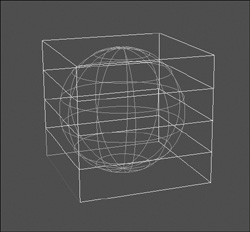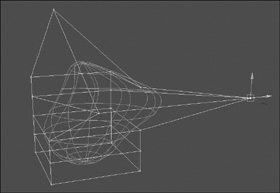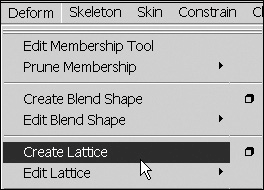The Lattice
|
| The Lattice is one of Maya's most used, and most functional, deformers. You can use it to simplify CV selection on a complex surface, to create the point of a character's elbow, or to provide added control to surface areas prone to creasing (for example, elbows and knees). Lattice deformers surround deformable objects with a box-like shape called a lattice (Figure 13.18). The lattice is then used to select and deform the surface by moving, rotating, or scaling the lattice structure (Figure 13.19). Lattices are also deformable objects, which means you can add other deformers to deform the lattice (and the object it's deforming). Figure 13.18. A lattice applied to a primitive NURBS sphere. Figure 13.19. By moving lattice points you deform the surface. An important option of the Lattice deformer is Divisions, found under the Lattice's Shape node in the Channel Box; A lattice is one of the few Maya objects that have options under its Shape node. Adding more divisions to a lattice indirectly adds more lattice points for future selection. A lattice point is created at every lattice crossing. To use a Lattice to deform a surface:
|
|





